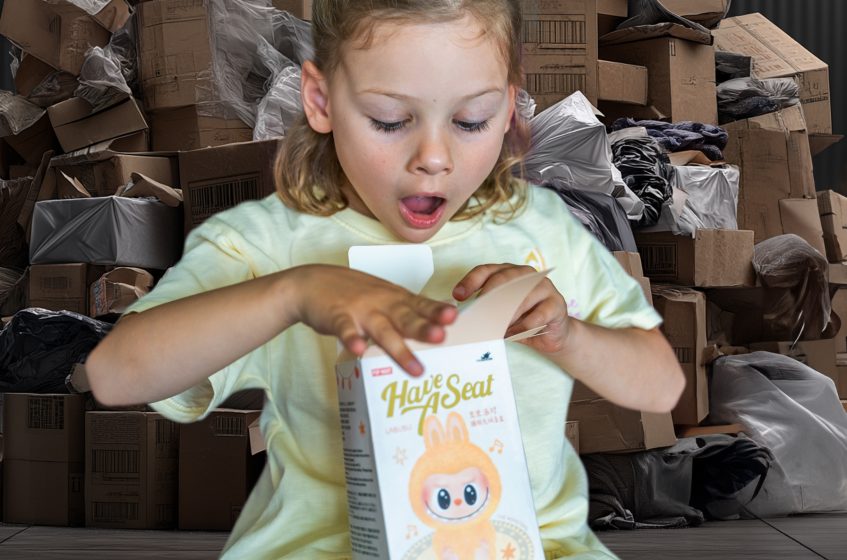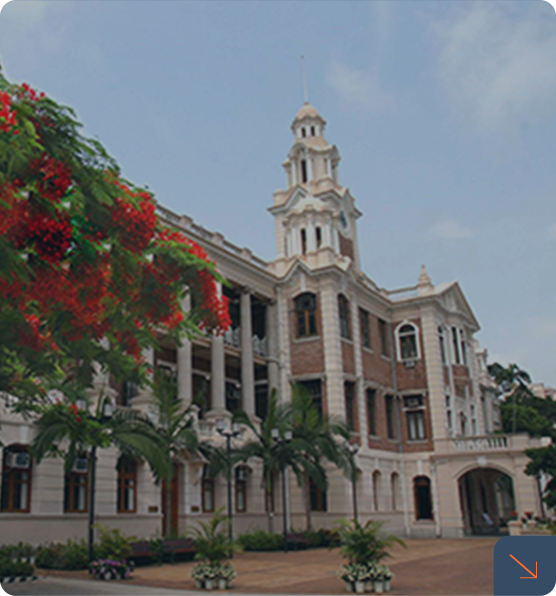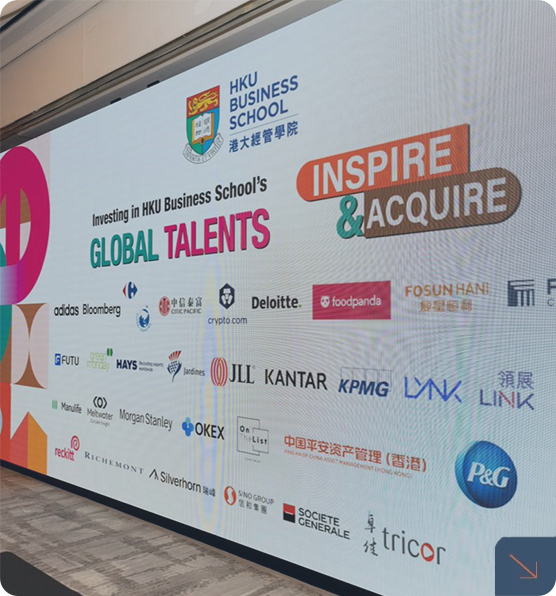
Going Global Riding ESG Waves: Labubu’s Meteoric Rise
Professor Guojun He and Ms Qidan Wang
23 July 2025
With its signature jagged-teeth smile and “ugly cute” look, Labubu has quickly turned into a cultural symbol, offering solace to city dwellers. In 2024, the IP of the Monsters series, including Labubu, registered sales of RMB3.041 billion, skyrocketing by 726.6% year on year to become Pop Mart’s most commercially valuable IP (see Note 1). The explosive growth of this creature in the global trendy toys market not only demonstrates the globalization potential of China’s original IP, but also underscores Hong Kong’s unique empowering role as an international platform.
As a meeting point of Eastern and Western cultures, coupled with its sophisticated Environmental, Social, and Governance (ESG) regulatory standards, international cultural and creative industry ecosystem, and open market environment, Hong Kong is well equipped to provide institutional safeguards for brand globalization.
However, such a phenomenon-level IP is not without underlying concerns. Its blind-box mechanism tends to induce irrational consumption among the younger generation while its use of polyvinyl chloride (PVC) and excessive packaging have given rise to environmental controversies. Moreover, the flood of counterfeits in the market have eroded the brand’ value premium. These issues highlight the problems faced by leading IPs in balancing commercial innovation with social responsibility, global expansion with compliance adaptation, and IP operations with the management of counterfeits.
The birth of Labubu hinges on Hong Kong’s cultural diversity and its fertile ground for the development of creative industries. The designer Kasing Lung integrates Scandinavian mythology with Eastern aesthetics to create an “ugly cute” image that holds mass appeal for Generation Z. Situated at the world’s cultural crossroads, with a Chinese cultural undertone and prolonged exposure to Western and Japanese pop cultures, Hong Kong has crafted distinctive “hybrid aesthetics” that serve as custom-made globalization DNA, favoured by markets in Asia, Europe, and America alike.
In terms of policy, the SAR Government launched the CreateSmart Initiative in 2009 to expedite the growth of cultural and creative industries. With an accumulated funding of approximately HK$3.4 billion, the Initiative primarily plans to incubate more than 30 cultural IP projects over the next five years and to lay the foundation for the sustainable expansion of the IP economy through a free trade regime and a robust intellectual property protection system.
In terms of ESG, the Hong Kong Exchanges and Clearing Limited requires issuers to make relevant disclosures in their ESG reports and has taken the lead in adopting the International Financial Reporting Standards – Sustainability Disclosure Standards (ISSB Standards), thereby enhancing the international comparability of the ESG reports of local companies. Thanks to its widespread ESG practices, Hong Kong-listed Pop Mart has seen its ESG rating by MSCI upgraded from BB to A, naturally drawing attention from international investors. By lowering compliance costs for overseas business development and boosting investor confidence worldwide, these measures have become an “invisible pass” for IP globalization.
The unprecedented success of Labubu is rooted in Pop Mart’s painstaking strategy vis-à-vis the global market. Through a “global IP + local narrative” approach, the company has launched co-branded products in countries including Singapore and Thailand, achieving cross-cultural emotional resonance. In 2024, Pop Mart accelerated its entry into emerging markets such as Vietnam and Indonesia, and made forays into other countries like Italy and Spain. Its international operational network is anchored by four regional headquarters: Asia-Pacific, Southeast Asia, Europe, and North America (see Note 2).
In the meantime, Pop Mart has continued to pursue innovation in materials and manufacturing techniques. Not only does the company produce the second-generation Labubu using environmentally-friendly modified PVC but it also avoids using toxic materials and complies with the Regulation (EC) concerning the Registration, Evaluation, Authorization, and Restriction of Chemicals (REACH) (see Note 3). According to its 2024 Sustainability Report and Environmental, Social, and Governance Report, the company has, through its “low-carbon liquid flowing adhesive” process, reduced both volatile organic compound emissions and energy consumption. Additionally, Pop Mart has adopted corrugated paper made of 100% recyclable materials, decreasing the volume of a single carton by over 30% compared to plastic packaging. During this period, the company also launched a carbon-neutral cultural gift box, with all packaging materials certified by the Forest Stewardship Council (FSC). According to disclosures, in active response to its social responsibility and sustainability requirements, Pop Mart and its suppliers have cut plastic use by 425 tonnes.
As a new form of consumption, the blind-box economy may serve to revitalize cultural and creative industries as well as the retail market. Nevertheless, the increasingly-prominent underlying social and environmental issues warrant attention from both the related sectors and society as a whole.
First of all, the crux of blind boxes lies in their inherent uncertainty. Since consumers have no way of knowing the contents of the products beforehand, such a design is prone to stimulating a gambler’s mentality. To obtain rare product models, consumers tend to keep buying to the point of overconsumption and increased economic pressure. Young consumers are particularly vulnerable to addiction, sometimes splashing out thousands or even tens of thousands of dollars in a single online order to buy large quantities of blind boxes. Similar consumption patterns have also spawned speculation in the secondary market, catapulting the prices of rare blind box models. This has attracted speculative capital and led to irrational premiums and speculative behaviour, resulting in escalating financial pressure and mental burden on consumers.
Secondly, the primary consumer group in the blind-box economy is typically aged between 15 and 30, consisting mainly of teenagers and students. With the widespread dissemination on social media and through online social groups, blind-box consumption has gradually become a trending topic and an identity symbol among young people. To participate in discussions and gain recognition among their peers, they continue purchasing blind boxes, thereby fostering a competitive and show-off consumer culture. This not only affects young people’s rational attitude towards consumption, but could also lead to social issues such as financial strain on families and distractions from studies. Some parents and education experts are even concerned that the blind-box economy may fuel risk-taking mentality and gambling tendencies among young people, hindering their mental health and the healthy development of their values.
Furthermore, the problems of excessive packaging and resource waste are becoming more serious than ever. To enhance the unboxing experience, blind-box packaging is now highly elaborate. As consumers repeatedly purchase and unbox these items, plastic and paper waste continues to accumulate. It is profligate for consumers to buy large quantities of these products, some of which ultimately end up unused or discarded. The manufacture and circulation of blind-box products, which are mostly made of plastics, exert additional pressure on the environment. Given the expansion of the blind-box economy, avoiding packaging waste and supporting material recovery and green design are all pressing issues that related sectors must address.
Last but not least, the rapid growth of the blind-box economy has led to widespread market irregularities, including consumer fraud, intellectual property infringement, and a flood of counterfeits. Taking advantage of consumers’ craze for rare blind boxes, some merchants engage in excessive marketing, false advertising, or even blind-box speculation, which inevitably compromises consumers’ interests.
The tremendous success of Labubu is not only the culmination of Pop Mart’s dedicated IP cultivation, innovative business model, and global strategy, supported by Hong Kong’s diverse creative resources, but is also reliant on the company’s forward-looking ESG management. This approach offers inspiration for Hong Kong’s cultural and creative industries, demonstrating how Hong Kong acts as the cradle of Labubu’s designs and as a vital platform for brand globalization, innovative business model implementation, cross-sector cooperation, and industry advancement. The city’s diverse culture, coherent policies, internationalized ESG standards, and open markets collectively offer an ideal environment for building world brands and stimulating business growth.
At the same time, the bubbles and risks underlying the global craze should not be overlooked. With Labubu’s market price now substantially exceeding its utility value, it warrants careful attention to market phenomena such as hunger marketing, reseller profiteering, and herd behaviour among consumers. For the brand itself, long-term robust development depends on striking a balance between an innovative business model and corporate social responsibility, mitigating the negative impacts of blind boxes on young consumers and the environment, and converting its diverse cultural DNA into a driving force for sustained innovation.
Note 1:https://finance.sina.com.cn/trust/2025-06-12/doc-inezvkhe6870025.shtml?froms=ggmp
Note 2:https://finance.sina.com.cn/jjxw/2025-03-28/doc-inerfcmm7096754.shtml
Note 3:https://finance.sina.com.cn/roll/2025-06-20/doc-infatvse0519231.shtml?froms=ggmp







